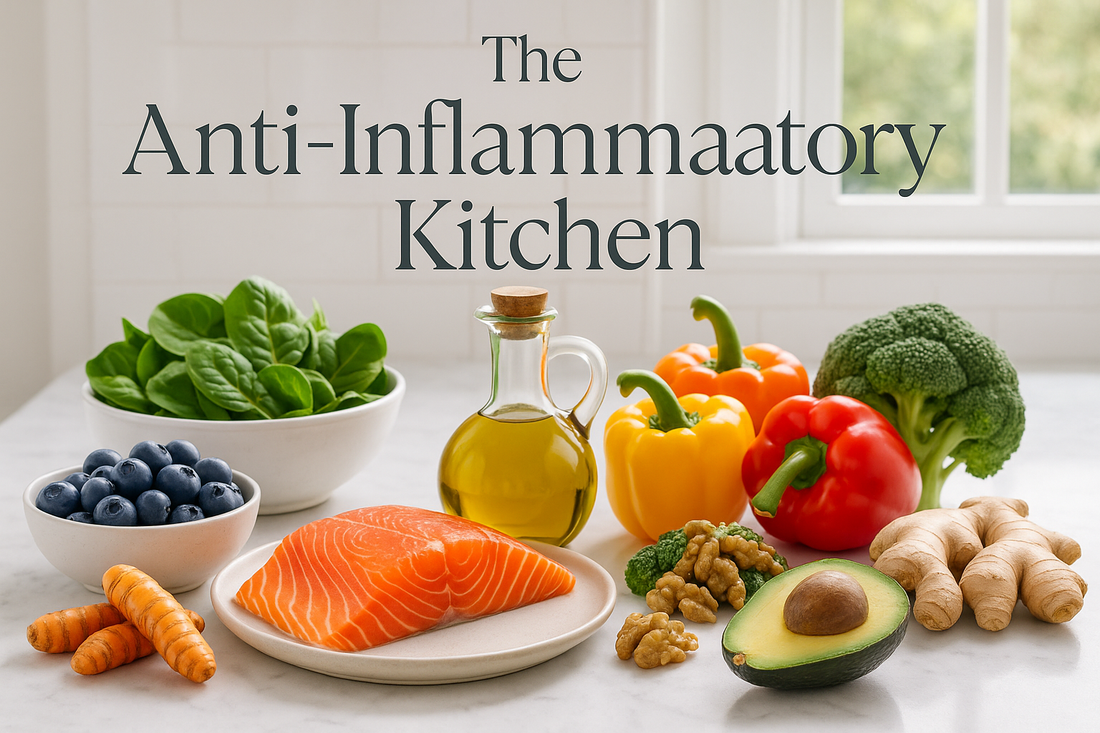
The Anti-Inflammatory Kitchen: Top 10 Foods to Fight Inflammation
Share
Inflammation is your body's natural defense mechanism, but when it becomes chronic—a low-grade, persistent state—it can quietly contribute to fatigue, joint pain, and long-term health issues. The good news? You hold the power to fight back right in your kitchen! By choosing certain foods, you can actively calm your body's internal systems. Here are the top 10 anti-inflammatory foods you should be adding to your plate today.
1. Berries
Why they work: All berries (blueberries, strawberries, raspberries) are packed with antioxidants called flavonoids, particularly anthocyanins, which give them their rich color. These compounds are highly effective at neutralizing free radicals and reducing inflammatory markers in the body.

2. Fatty Fish (Salmon, Mackerel, Sardines)
Why they work: These fish are excellent sources of Omega-3 fatty acids (EPA and DHA). Omega-3s are powerful anti-inflammatories that the body converts into compounds called resolvins and protectins, which actively shut down inflammation. Aim for two servings per week.

3. Turmeric
Why it works: This vibrant yellow spice contains curcumin, its main active compound. Curcumin is one of the most extensively studied anti-inflammatory compounds, shown to block the molecules that trigger chronic inflammation in the body. Pro Tip: Always consume turmeric with black pepper to boost curcumin absorption.

4. Leafy Green Vegetables (Spinach, Kale, Collard Greens)
Why they work: They are rich in vitamins K and A, which help protect the brain and nervous system from the oxidative stress often linked to inflammation. They also contain potent antioxidants that scavenge damaging free radicals.

5. Ginger
Why it work: Similar to turmeric, ginger contains bioactive compounds called gingerols and shogaols that have powerful anti-inflammatory and antioxidant effects. Ginger is particularly effective at soothing the digestive tract and reducing inflammation related to muscle soreness.
6. Walnuts and Almonds
Why they work: Nuts, particularly walnuts, are an excellent source of alpha-linolenic acid (ALA), another type of anti-inflammatory Omega-3 fatty acid. Almonds provide vitamin E, which also acts as a protective antioxidant.

7. Olive Oil (Extra Virgin)
Why it works: Extra virgin olive oil (EVOO) contains oleocanthal, a compound that has been shown to work similarly to ibuprofen, a non-steroidal anti-inflammatory drug (NSAID). EVOO is a staple in the Mediterranean diet for a reason!

8. Tomatoes
Why they work: Tomatoes are rich in lycopene, a powerful antioxidant that can reduce inflammation, especially in the lungs. Cooking tomatoes (like in sauces) increases your body's ability to absorb lycopene.

9. Garlic
Why it works: Garlic contains sulfur compounds that trigger your immune system to slow the production of inflammatory substances. The compound allicin is particularly noted for its immune-boosting and anti-inflammatory effects.
10. Green Tea
Why it works: Green tea is loaded with polyphenols, especially one called epigallocatechin-3-gallate (EGCG). EGCG has been shown in studies to reduce inflammation and protect against cell damage.

Conclusion: Making the Shift
Fighting inflammation doesn't require a complicated diet—it simply requires making conscious choices. By integrating these top 10 anti-inflammatory foods into your daily meals, you are empowering your body to heal, increase your energy, and build a stronger, healthier foundation. Start small with one or two additions this week and feel the difference!